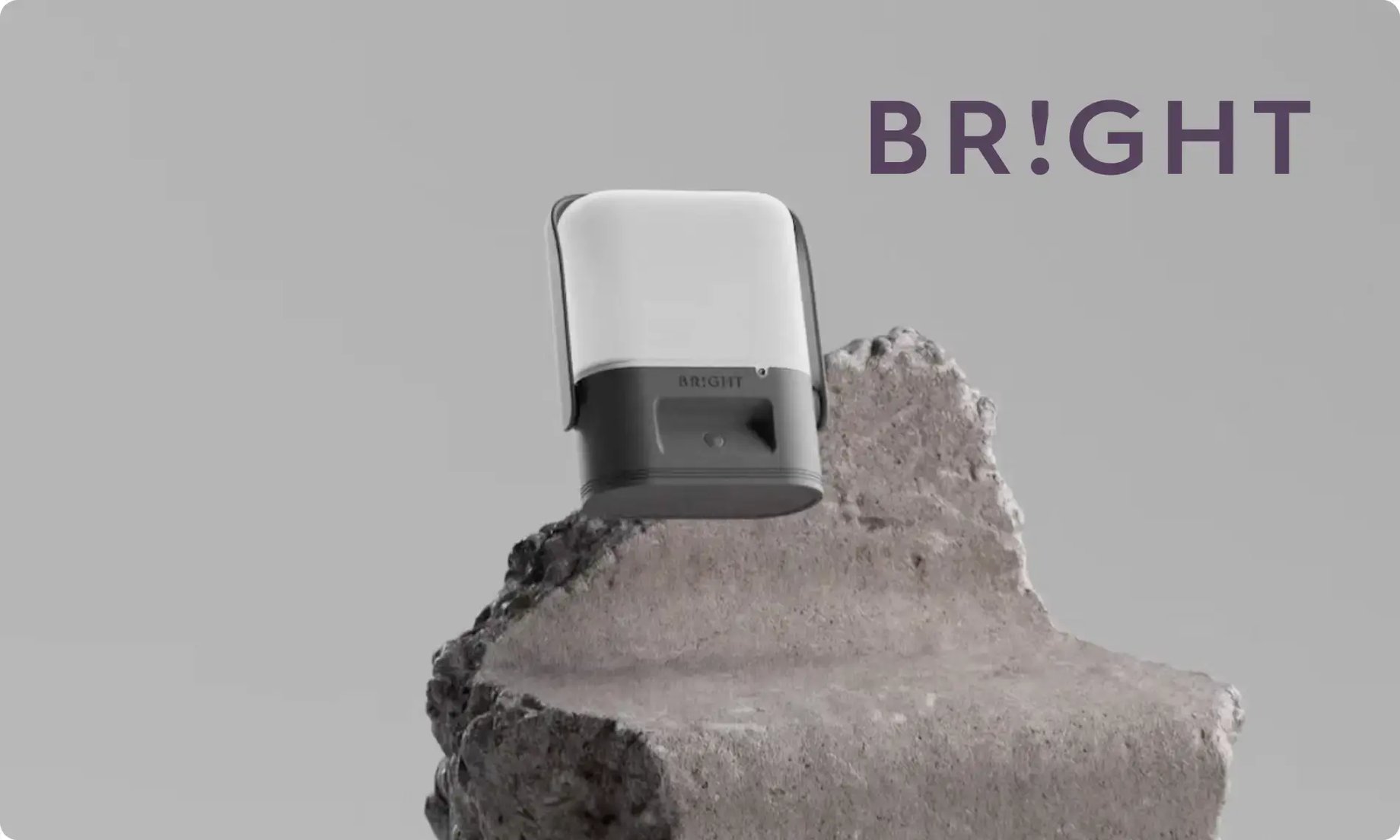Emergency lighting plays a critical role in disaster relief, humanitarian aid, and off-grid
electrification. But as organizations working in this space become more focused on
sustainability, the need for credible, transparent environmental data is becoming
increasingly important.

BRIGHT Products is a Norwegian company that develops solar-powered portable lighting and energy solutions for humanitarian aid and disaster response. The company plays a significant role in providing durable, energy-efficient lighting to humanitarian organizations, disaster-stricken areas, and communities without reliable electricity. By partnering with humanitarian organisations, BRIGHT ensures that quality solar lighting solutions are accessible to those in need, enhancing safety and well-being.
For BRIGHT Products environmental product declarations (EPDs) are not just a tool for reporting. They are a strategic asset for product development and stakeholder engagement. In addition, EPDs demonstrate the innovative work BRIGHT’s research and development team is putting into making BRIGHT’s product line sustainable.
A simple guide to EPDs: What are environmental product declarations (EPDs), why you need them, and how to create them.
Meeting sustainability demands in humanitarian procurement
"Providing access to reliable energy should not be at the expense of the environment.”
- Fernando M. Barrios Acuña, Sales Manager at BRIGHT Products
Humanitarian procurement is beginning to evolve, with non-governmental organizations (NGOs) and governmental agencies placing increasing emphasis on sustainability criteria and transparent product documentation. While the private sector has often led innovation in this area, public sector actors are now moving to catch up. Most humanitarian organizations operate in highly regulated environments and are progressively aligning their procurement frameworks with environmental performance standards.
Currently, EPDs are not required for participation in most humanitarian tenders. However, BRIGHT anticipates that this will change within the next five years and is actively advocating for lifecycle-based sustainability documentation to become a standard requirement. The company welcomes this shift in procurement standards within the humanitarian sector and views it as a necessity in addressing climate change.
Quantifying impacts to improve products
BRIGHT began developing LCAs as part of a broader strategy to reduce its environmental footprint and influence industry standards. BRIGHT works closely with UN agencies and other major NGOs to advocate the need for LCA in the humanitarian market.
By analyzing their product life cycles using One Click LCA, BRIGHT discovered unexpected impacts. For example, they found that LEDs — typically considered low-impact — can contribute significantly to a product’s footprint depending on the quantity used.
“Before doing an EPD, we were not aware of the massive impact that LEDs have. Now we can use this in future product design.”
- Fernando M. Barrios Acuña, Sales Manager at BRIGHT Products
The EPD process will help the company optimize product design and choose quality components with a better environmental footprint. This evidence-based approach will feed into BRIGHT’s research and development (R&D) strategy — particularly around two key sustainability drivers: extending product lifespan, and using recyclable and repairable components. It also strengthens BRIGHT’s sustainability communication, helping the company communicate verified product performance to procurement bodies and NGO partners.
Improving procurement outcomes and stakeholder trust
EPDs have helped differentiate BRIGHT in a crowded market, where many portable solar lamps are built with virgin plastic, low durability, and no analysis of lifecycle impacts. In contrast, BRIGHT designs for longevity, repairability, and recyclability — addressing key sustainability challenges such as material sourcing and end-of-life management. In humanitarian settings, where access to reliable energy is limited, the durability of solar lamps is crucial. A longer-lasting lamp ensures that the end user has consistent access to light and power, enhancing safety, supporting education, and improving overall well-being in challenging environments.
Looking ahead, the company also sees strategic value in environmental transparency beyond institutional procurement. EPDs open the door to new partnerships — particularly with companies seeking to align their ESG or CSR programs with credible, low-carbon products.
Stakeholder response has been positive. Several humanitarian NGOs have provided direct feedback, noting that they appreciate BRIGHT’s transparency and the use of recycled materials.
EPD Generator for Luminaires: Automate luminaire EPD creation
Sustainability without compromising performance
Emergency lighting products must be durable, reliable, and usable in harsh conditions — from refugee camps in East Africa to cold winters in Syria. BRIGHT’s work spans off-grid rural electrification, disaster relief, and emergency preparedness projects across Africa, Asia, and Latin America, with pilots underway to evaluate product performance and usability in different settings. In this context, sustainability must be embedded without sacrificing technical performance.
“Sustainability must not compromise quality. We integrate both through robust research and development. Durable, high-performance lighting solutions ensure customer satisfaction while meeting eco-friendly standards.”
- Fernando M. Barrios Acuña, Sales Manager at BRIGHT Products
This approach is consistent with BRIGHT’s sustainability pillars: durability, repairability, and recyclability. The company’s solar lighting products help replace kerosene lamps in off-grid communities — cutting CO₂ emissions, improving indoor air quality, and enhancing safety.
Data-driven design with One Click LCA
Measuring the full life-cycle impact of a lighting system — materials, energy use, end-of-life options — can be complex. BRIGHT found that data collection was the most difficult aspect of the process, but noted that the software itself made the process easier.
“One Click LCA helped us understand the real impact of our product. It’s user-friendly, and the onboarding support and professional team made a big difference.”
- Fernando M. Barrios Acuña, Sales Manager at BRIGHT Products
The software now integrates into BRIGHT’s design and procurement workflows. In the future when developing new products, the company is thinking of implementing LCAs early in the product development process to understand potential impacts of products.
This early-stage integration of life-cycle thinking helps reduce risks and improves
alignment with environmental goals.
Stronger environmental accountability for emergency lighting: the path forward
The use of environmental product declarations for emergency lighting is likely to increase as public procurement tightens sustainability requirements. BRIGHT Products demonstrates that it is possible to align durability, technical performance, and environmental responsibility — while also strengthening relationships with global humanitarian partners.
For companies looking to lead in sustainable lighting or other off-grid technologies, early adoption of transparent life-cycle assessment practices and tools, will likely be a prerequisite for future contracts and credibility.
One Click LCA’s EPD Generator for Luminaires is designed to simplify the process of generating EPDs for lighting fixtures. The tool allows businesses to assess the environmental impact of their products accurately and efficiently, providing the transparency needed to align with sustainability goals and meet regulatory requirements. With the ability to create high-quality EPDs tailored to specific product types, companies can demonstrate their commitment to sustainability and gain a competitive edge in a market that increasingly values environmental responsibility.
Carbon Experts Newsletter
Industry news & insights — straight to your inbox
Want to learn more?
Laura Drury • May 30 2024
Justyna Michalik-Minken • Mar 31 2025
Justyna Michalik-Minken • Mar 10 2025
Laura Drury • Mar 21 2025
